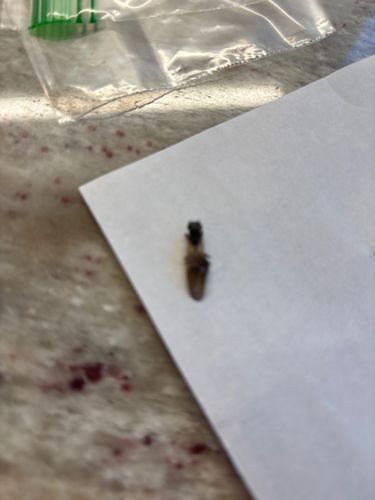Click Beetle
Scientific Name: Elateridae (family)
Order & Family: Order: Coleoptera, Family: Elateridae
Size: Typically 2 to 60 mm (approximately 0.08 to 2.4 inches), depending on the species. The specimen in the image appears to be on the smaller side, likely within the 5-15 mm range.

Natural Habitat
Click beetles are quite diverse in their habitats, found in forests, grasslands, agricultural fields, gardens, and decaying wood. Larvae (wireworms) live in the soil.
Diet & Feeding
Adult click beetles generally feed on nectar, pollen, decaying plant matter, or sap. Some species are predators of other small insects in their adult stage. The larvae, known as wireworms, are primarily herbivorous, feeding on roots, tubers, and seeds of various plants, including agricultural crops.
Behavior Patterns
Adult click beetles are generally nocturnal or crepuscular. They are known for their ability to 'click' and jump into the air when overturned, a mechanism to right themselves or escape predators. Larvae (wireworms) are subterranean and can live for several years, moving through the soil to find food.
Risks & Benefits
Risks: The primary risk associated with click beetles comes from their larval stage (wireworms), which can be significant agricultural pests. They feed on the roots and underground parts of crops such as corn, wheat, potatoes, and other vegetables, causing damage and yield loss. Benefits: Adult click beetles can contribute to pollination by feeding on nectar and pollen. Some adult species and a few wireworm species can be predatory on other pest insects, offering a minor benefit.
Identified on: 8/22/2025